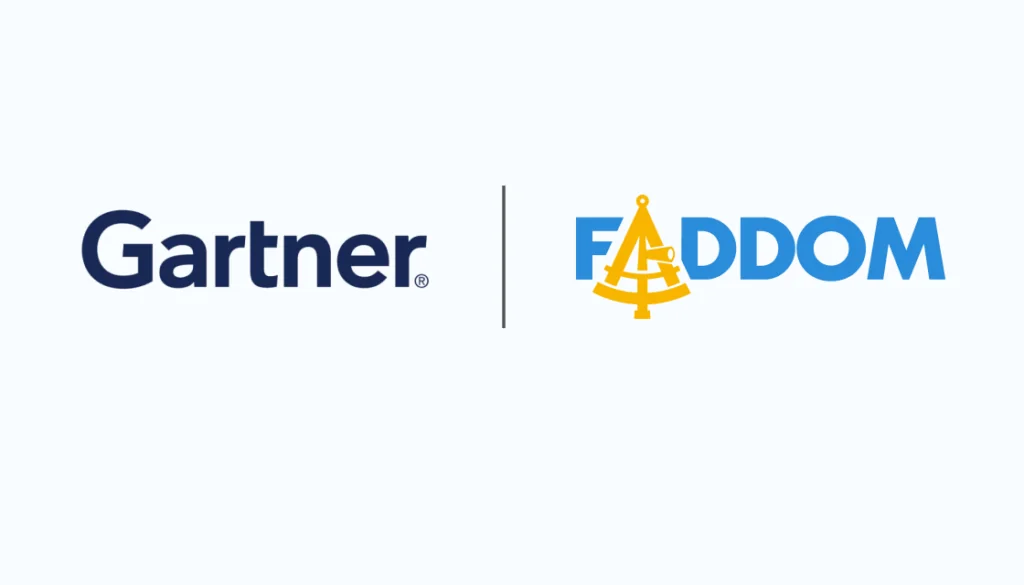The transition from SSL to TLS has long been the first line of defense for protecting data in transit from theft by malicious actors in a web and cloud world. SSL and TLS are two widely adopted security protocols that create a secure connection between a website and a web browser via the use of public/private keys, digital signatures, and encryption. This post will take a look at how their evolution has gone from rocky to rock solid over the last 30 years.
Table of Contents
ToggleWhat Is Secure Sockets Layer (SSL)?
Netscape developed the Secure Sockets Layer (SSL) protocol (SSL 1.0) in 1995, followed by SSL 2.0 in 1996 to provide encryption for HTTP traffic on the web. HTTP (Hypertext Transfer Protocol) was the original protocol used for web data transfer. A certificate authority (CA) issues and verifies the SSL certificate identity of the website owner to ensure a secure transmission. Public and private keys are contained within the SSL certificate, with the public key used to encrypt server-to-browser information and the private key needed to decrypt that information. (Learn more about how to check SSL certificates.)
Several security flaws prevented SSL 1.0 and 2.0 from being publicly released. Then came the draft for SSL v3.0, which was submitted to the Internet Engineering Task Force (IETF) in 1996. This version prevented the ability to tamper, forge messages, or eavesdrop on web data communication.
As SSL 3.0 became more widely adopted, standardized data encryption protocols became necessary to ensure interoperability across all web browsers and servers. The IETF published RFC (request for comment) 6101 in 1996 as the specifications and notes for SSL v3.0. This protocol became known as TLS 1.0 according to RFC 2246 in January 1999. HTTPS became the designation for TLS with encrypted HTTP.
What Is Transport Layer Security (TLS)?
Introduced by the IETF in 1999, the Transport Layer Security (TLS) protocol soon gained broad use as the best method for encrypting web communications. Its foundational services are:
- Authentication: Ensures that both communicating parties are genuine
- Encryption: Safeguards transmitted data from unauthorized access
- Integrity: Guarantees data transmissions are unaltered
The TLS process begins with a handshake phase where the client and server negotiate parameters and settle on a shared secret, facilitating secure application data exchanges such as HTTP. Initially launched as TLS 1.0, the protocol underwent upgrades, leading to TLS 1.1, then TLS 1.2 in 2008, and the latest, TLS 1.3 (RFC 8446), in 2018.
TLS 1.3 is for encrypting online interactions and is recommended for organizations and businesses by the National Institute of Standards and Technology (NIST). This has resulted in a significant number of businesses using different versions of TLS despite variations that impact security and speed for end users and customers.
The Difference Between SSL vs TLS
Although they were developed to accomplish the same goal, SSL and TLS (versions 1.2 and 1.3) differ in many ways. By understanding how they vary, organizations can see how migration to the most recent protocol will affect their security, operational efficiency, and customer experience.
Cipher Suites
Cipher suites, which are sets of algorithms used to encrypt data, differ between the SSL and TLS protocols. While both protocols use cipher suites for secure internet communications, TLS, especially version 1.3, has enhanced encryption algorithms such as perfect forward secrecy. TLS 1.2 supported some ciphers with cryptographic weaknesses, but TLS 1.3 streamlined its cipher suite to only include algorithms and ciphers devoid of known vulnerabilities, excluding those such as SHA-1, RSA key exchanges, RC4, CBC-mode ciphers, and MD5 to prevent potential downgrade attacks.
Perfect Forward Secrecy
TLS 1.3 enhances security by mandating perfect forward secrecy, a feature not compulsory in prior versions. This secrecy employs the ephemeral Diffie-Hellman (DH) algorithm for key exchanges, creating a unique session key for every interaction. These session keys, used solely for their respective network sessions and discarded afterward, bolster defense against brute force and man-in-the-middle attacks. If compromised, an attacker only gains access to the data of that specific session. Not even possession of the server’s private key would allow decryption of other sessions.
Alert Messages
SSL error and warning alert messages are not encrypted, which allows anyone to read them if intercepted. On the other hand, access to encrypted TLS alert messages is restricted to the sender and intended recipient(s).
Record Protocol
While the SSL record protocol for exchanged data encapsulation is proprietary to Netscape, TLS uses a standardized record protocol developed by the IETF.
Handshake Process
The handshake process, which establishes a secure communication channel between two parties, varies between SSL and TLS. In SSL, it involves both a “full handshake” and an “abbreviated handshake.” In contrast, TLS completes this process in one step, called the “full handshake.” TLS 1.3 encrypts the server certificate by default, significantly reducing the number of packets required for a successful handshake.
Message Authentication
The message authentication process verifies that the sent data and received data match. SSL’s MD5 authentication algorithm is vulnerable to collision attacks, while the TLS SHA-256 algorithm is not.
Attackers are increasingly targeting TLS-based encryption, which has led to the deprecation of TLS 1.0 and TLS 1.1. The superiority of TLS 1.3 as explained above has led to a de facto end-of-life date of January 1, 2024, for TLS 1.2. Organizations are at different stages of migration and will need to develop a solid migration plan that avoids the biggest challenges.

Lanir specializes in founding new tech companies for Enterprise Software: Assemble and nurture a great team, Early stage funding to growth late stage, One design partner to hundreds of enterprise customers, MVP to Enterprise grade product, Low level kernel engineering to AI/ML and BigData, One advisory board to a long list of shareholders and board members of the worlds largest VCs
Tips from the Expert
In my experience, here are tips that can help you manage the transition from SSL to TLS effectively:
-
Create a comprehensive TLS inventory
Document all devices, applications, and certificates using SSL/TLS to prioritize updates and avoid overlooked endpoints.
-
Automate certificate management
Use automated tools to track and renew certificates, reducing manual errors and ensuring compliance across your environment.
-
Test for compatibility
Assess older systems for TLS 1.3 compatibility to identify any required updates or replacements before migrating.
-
Implement phased migration
Migrate in stages, starting with non-critical systems, and have a rollback plan to handle unexpected issues.
-
Update security policies
Revise security policies post-migration to reflect new TLS configurations and train teams on best practices.
TLS Version Transition Challenges
Based on the security and speed differences between TLS 1.2 vs. 1.3, NIST recommends all organizations complete migration to support TLS 1.3 by January 1, 2024, in the NIST SP 800-52 Rev. 2. Most countries’ relevant entities, such as the Israel National Cyber Directorate (INCD), have based their cybersecurity strategy for businesses on NIST guidelines. With a significant number of organizations still in the planning stages of migration, they will need a solid understanding of the challenges they face to develop a migration plan.
SMB and enterprise environments can both have thousands of servers, devices, and applications in the hybrid cloud era. Many of these are web applications, including e-commerce, customer relationship management (CRM), project management, and real-time communication apps among others.
That makes the discovery and TLS migration process a major challenge for numerous reasons. Two of the most important are:
- Large enterprises may have a myriad of sites and systems, with varying TLS versions. Overlooking such endpoints could lead to post-migration failures, resulting in application downtimes and service disruptions.
- Servers and clients operating on older TLS versions will require updating of their digital certificates and support with the latest version.
For IT leaders in both SMB and enterprise organizations, properly navigating the complex waters of TLS migration is paramount to ensure the security, reliability, and performance of digital interactions. As technology environments evolve and cyber threats become more sophisticated, upgrading to a more advanced version of TLS isn’t just about compliance or ticking a box; it’s about fortifying the very backbone of digital communication.
It can be best to start with some universal tips for defining the TLS upgrade migration process to ensure a seamless transition, maximize security, and minimize disruptions.
Tips for TLS Upgrade Migration
The point of any TLS migration is to improve data communication security. This requires organizations to start by pinpointing all devices using TLS, capturing every TLS certificate—whether tied to internal or external servers. At the core of TLS and SSL protocols are Public Key Infrastructure (PKI) and X.509, which enable web browsers to validate a webpage’s TLS status.
Manually locating, tracking, and managing TLS certificates can be highly error-prone and challenging regardless of the size of the organization. Many IT teams will use a certificate lifecycle management (CLM) tool that integrates with other application and infrastructure discovery and mapping tools to perform a comprehensive scan of the entire network. This will enable certificate discovery across multi-cloud and hybrid-cloud environments and can work with network detection and response tools.
Inventory and Assessment
The process of identifying and cataloging all TLS certificates requires noting crucial details such as the device, location, TLS version, expiration date, and owner. Once IT teams create this inventory, they can categorize and rank these certificates according to their TLS versions and renewal urgency. This is imperative for TLS certificates on pivotal, public-facing applications, especially those handling inbound traffic.
Analysis and Implementation
A smooth TLS migration requires that IT teams keep key stakeholders informed about network and application usage due to upgrade implications. An impact analysis will gauge device readiness for TLS 1.3 and enable the development of a detailed client-server communication matrix. This will help in pinpointing data flows and system components still dependent on older TLS versions. It’s imperative to verify that all endpoints and APIs are congruent with the updated TLS protocol to avoid potential compatibility challenges and subsequent application downtimes.
Some organizations will encounter outdated servers or devices operating on legacy systems, which require a comprehensive review for application compatibility. This may require hardware or software upgrades along with post-upgrade tailoring for migrated protocol support. This is where application dependency mapping (ADM) tools play a critical role. The ideal ADM solution will provide comprehensive network topology mapping to discover network devices across hybrid cloud environments.
Policy Formulation and Implementation
Organizations must formulate business-centric security protocols to streamline the migration and create a uniform TLS deployment across their infrastructure. This starts with clearly outlining the steps to deactivate all SSL versions and outdated TLS versions on every affected endpoint. The new TLS configuration specifics must be detailed, ranging from cipher suites and hashing algorithms to key exchange procedures to develop clear guidance on secure configurations in real time.
Migration and Integration
The migration process continues by renewing and updating certificates based on priority. Certificate signing requests (CSRs) are generated to obtain new certificates issued by the designated certificate authority (CA). New certificates can then be added to their respective devices and tied to the applications, with each step documented.
Migration Assessment and Reporting
IT teams should review the application monitoring systems after the migration to make sure all applications are running smoothly as part of a comprehensive migration evaluation. The team can then review the certificate inventory to verify the usage of the latest TLS protocol across all systems. ADM tool integration can support IT infrastructure mapping best practices for visualizing, planning, and troubleshooting via alert prioritization support.
A Summary
Despite the growth of TLS, many people still use the term SSL, and millions of websites still use some form of SSL certificate. There are as many as 46 million websites that use SSL by default, according to SerpWatch, a company that monitors SEO and SERP rankings. Others like BuiltWith, a provider of website profile/analysis and lead generation software, peg that number at nearly 77 million in 2023.
At the same time, hyperscale cloud providers such as AWS and others require their customers to have a minimum of TLS 1.2 to use their services.
In today’s digital landscape, organizations must have fast and secure web data communication, especially given malicious actors who can use certificates to hijack data. Every organization must also start from a place of comprehensive visibility regarding all certificates, applications, and devices across their network in a hybrid cloud world.
To see all your certificates and which ones need renewing as well as visualize your entire on-premise and cloud infrastructure with continuous, automatic updates, start a free trial by filling out the sidebar form today!









